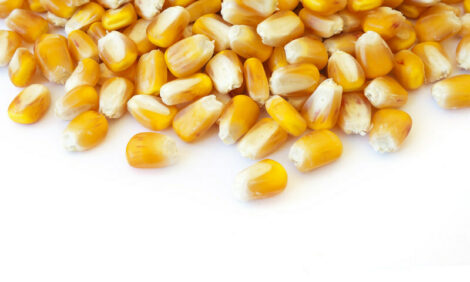



Feed Management to Raise Swine and Protect the Environment
Today's producers must keep water and air in mind as often as they do pigs, sows and profit margins, write University of Michigan's Dale W. Rozeboom, associate professor of animal science, and Gretchen M. Hill, professor of animal science.Society has become concerned about phosphorus and nitrogen in surface waters and groundwater. Gas and odour emissions can cause nuisances and difficult relationships with neighbours.
What can a pork producer do to simultaneously manage production efficiency, nutrient excretion and environmental impacts? Consider the following ideas and practices as you start evaluating your current feeding programme and diet formulations. Check to see that you are meeting and not exceeding the nutritional requirements of pigs, that you are selecting digestible feedstuffs, and that you are minimizing feed and /or nutrient waste.
Feed Management to Use Minerals Efficiently
Reduction of phosphorus excreted in swine manure may be accomplished by several strategies. The use of a high quality dietary phytase enzyme product in a corn-soybean diet will reduce faecal phosphorus by 20 to 30 per cent when fed at the appropriate rate in the diet. Unfortunately, there are no data to show that all available commercial products are equally effective. Energy sources such as corn products without the germ and hull, wheat or wheat middlings are equal to or more effective than phytase supplementation.
In dietary formulation, other important considerations should include selecting phosphorus sources with high availability, reducing excess dietary phosphorus and calcium, and providing appropriate amounts of vitamin D.
The phosphorus in commercial dicalcium phosphate is slightly less available than that of monocalcium phosphate but both are slightly more available to the pig than defluorinated phosphate.
Because calcium is inexpensive compared with phosphorus, often excess limestone is used in diets beyond the requirements. Narrowing the ratio of calcium to phosphorus results in more efficient use of phosphorus, as does feeding the minimum phosphorus to meet the animal’s needs. Vitamin D, like calcium, is essential for the absorption of phosphorus. However, controversy exits over the appropriate amount and form of vitamin D to feed pigs. Traditionally, both D2 and D3 have been thought to be used by pigs. However, the influence of genetics, age, today’s housing and management, and new available forms of vitamin D have not been investigated, so the exact dietary concentrations are unknown.
In recent years, swine producers have become more concerned about sulphur intakes. Whether it is entering the gastrointestinal tract in water, mineral forms or dietary ingredients, the intake of sulphur is believed to have increased. Many sources of distiller’s grain products, such as DDGS, contain sulphur as a residual from the grain processing. Though it does not affect performance, it may have an effect on air emissions.
Feed Management to Use Nitrogen Efficiently
Nitrogen excretion can be minimised by using several feeding management practices (Table 1). Shown are the percentage of swine farms in 2000 making use of these techniques and the expected reduction in nitrogen excretion.

The median of the range provided by the Federation of Animal Science Societies was used to rank the potential reduction in nitrogen excretion. It is interesting that, according to the US Department of Agriculture Animal and Plant Health Inspection Service (USDA/APHIS), so few producers are addressing nitrogen amounts in manure and air by feeding synthetic amino acids.
Feed Management to Minimise Dust Effectively
Dust can be an irritant and a vehicle of other odorous compounds. Here are some practical ways to minimise dust inside and exiting swine facilities. Use wet/dry feeders, repair feeders and adjust feeders frequently, all to reduce feed waste. Minimising particle size improves feed efficiency but also increases dustiness. Pelleting and adding two per cent or more of fat to the diet helps control dust when using a fine grind. These all improve animal efficiency. If you are pelleting, make adjustments at the feed mill that maximise pellet integrity and minimise the amount of pellet crumbling.
Feed Management to Optimise Profit Margins
A cost-benefit assessment of each management practice is essential in establishing a nutrition programme – genotype, phase and sex-specific least-cost formulations and ration budgets – that is appropriate for a desired amount of productivity per dollar returned. A nutrition consultant or feed industry technical service provider may be very helpful in evaluating your feeding programme.
Once again, diets should be selected that maximise lean gain and efficiency of gain, and limit the feeding of excess nutrients.
February 2009








